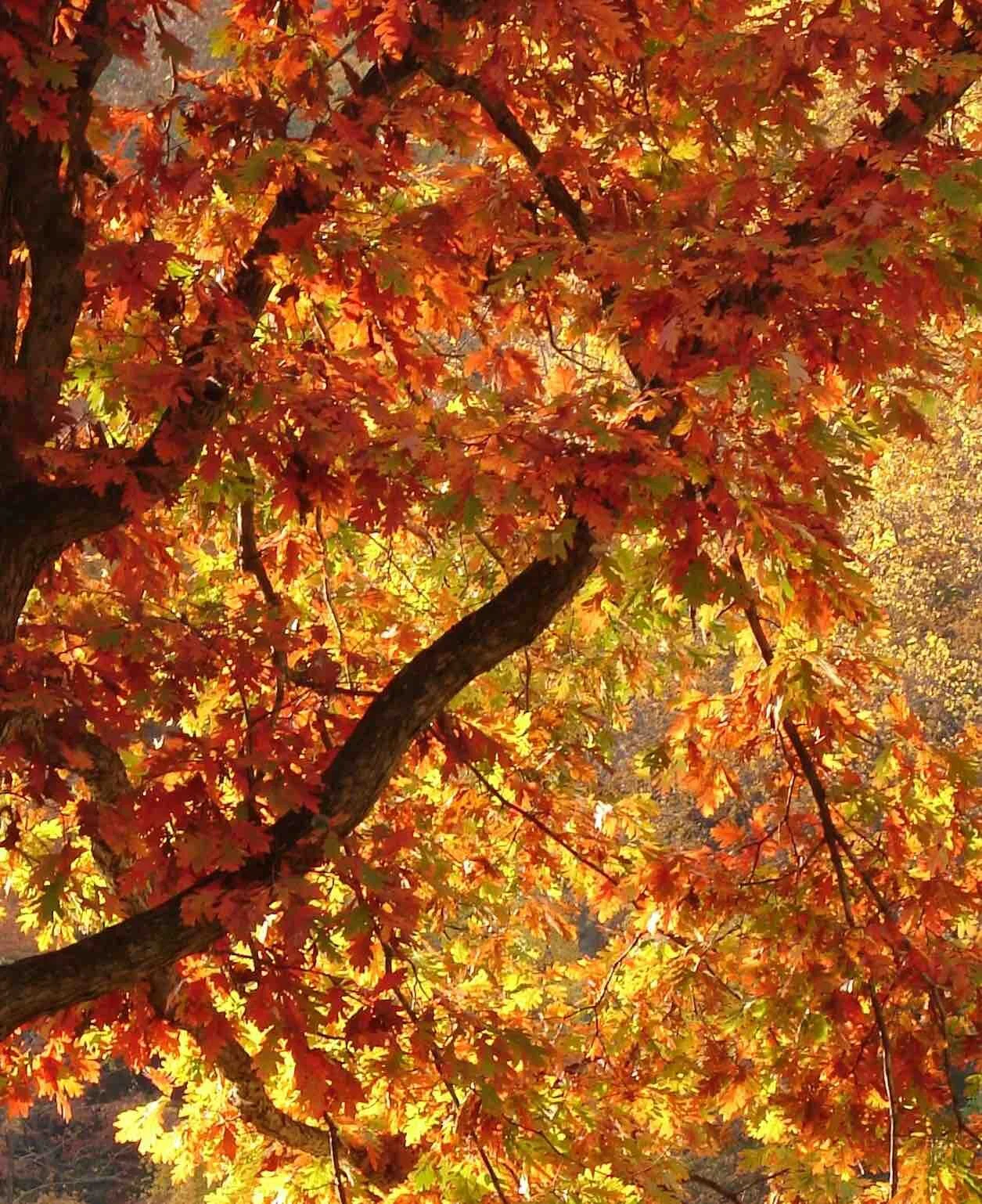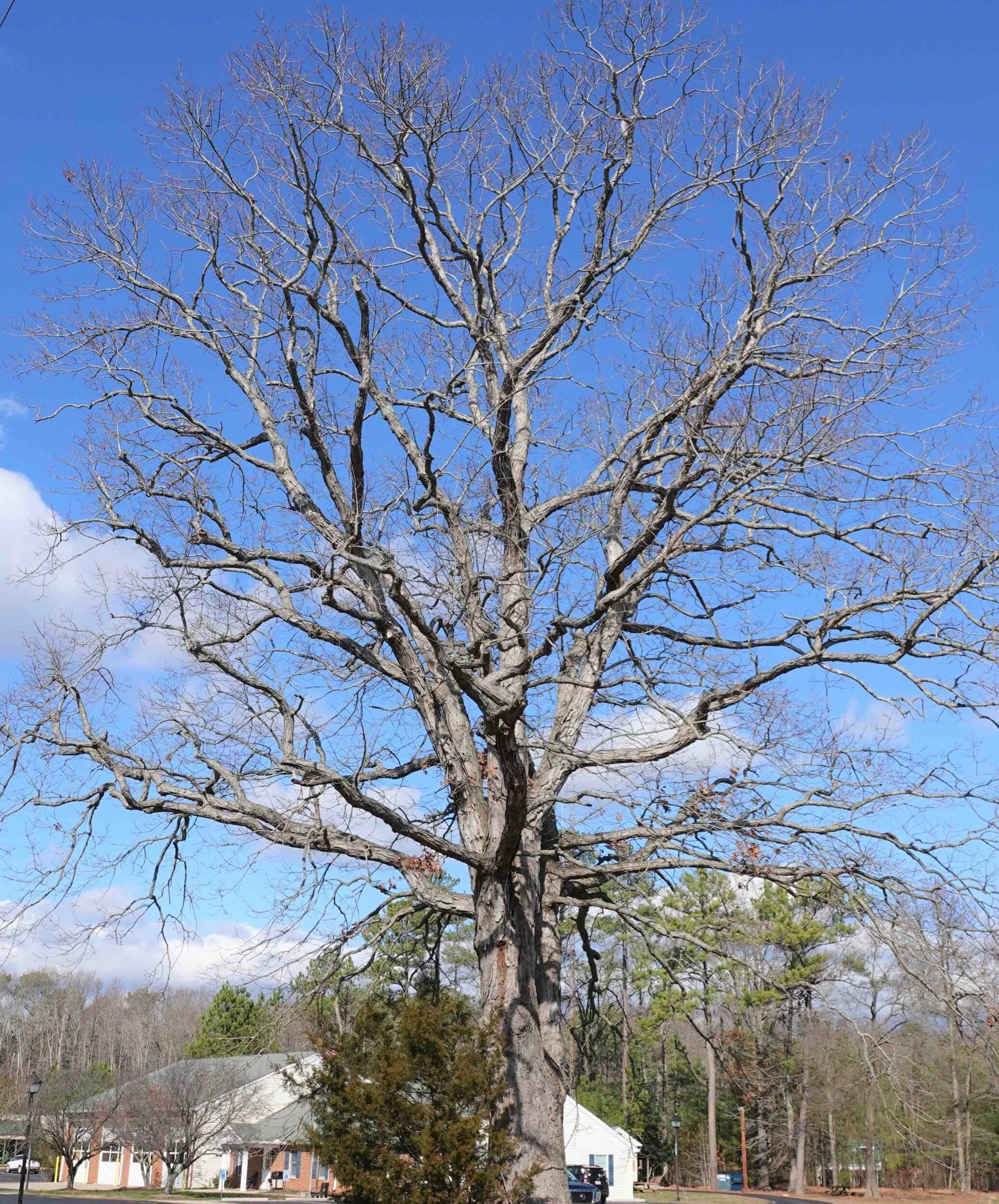Plant of the Month January 2020: White Oak, Quercus alba
Nelson Co, VA White Oak: Very Old White Oak in Nelson Co., VA, Photo by Carol Hammer
The White Oak, Quercus alba, is one of our most stately, magnificent native trees, and one of our longest-lived. Specimens have been documented to be over 450 years old - already mature before the birth of our country. White Oaks are probably the most common and widespread oak in Virginia and are one of the most adaptable, able to grow in a wide variety of habitats from dry upland forests and ridges to moist slopes and well drained bottomlands and swamp margins. A large white oak growing in the open with its massive trunk clothed in warm shaggy gray bark, and its huge, twisted limbs, is an unforgettable sight.
Like other oaks, the White Oak provides enormous ecological benefits. Their sweet acorns mature in one year and are eaten by over 90 species wildlife in Virginia, including: wild turkeys, quail, grouse, wood ducks, jays, bear, deer, opossums, raccoons, squirrels and many other small rodents. Entomologist Doug Tallamy in his research, and ground-breaking book ‘Bringing Nature Home’ states that a mature White Oak supports a staggering 537 species of butterfly and moth caterpillars. These caterpillars themselves are critical baby food for 95% of all our young songbirds providing food for the first month or two of their lives. In fact, Dr. Tallamy points out that if you can plant only one plant for wildlife or the environment, the White Oak would be it!
Fall White Oak: Brilliant fall color of the White Oak illuminates the tree canopy. Photo by Betsy Washington
White Oaks are exquisitely beautiful in every season and even as young saplings. The new leaves emerge a deep rose red in spring, changing to a silvery pink, and finally to dark green with whitish undersides in summer. The leaves are distinctive in themselves with a narrow wedge-shaped base tapering to a scalloped edge with 7 to 9 rounded lobes. In fall, the leaves turn stunning shades of scarlet to wine red and hold their color late in the fall. The bark of older trees matures into distinctive light gray shaggy plates, that overlapping each other vertically, with their edges tending to lift up at the edges.
White Oaks, like many oaks, are tap-tooted and are best planted at smaller sizes. They grow best in moist but well drained acid to neutral soils in partial to full sun although are quite adaptable. They are moderately fast growing in their youth although become relatively slow growing over the course of their long lives. Like many of our native trees, oaks have suffered from a variety of issues in recent years including introduced pest and diseases. A condition known as Oak Decline, has taken a toll in the past few years causing a gradual decline in health from a variety of causes including environmental extremes such as wetter than normal springs, hotter summers with prolonged droughts, and stresses such as soil compaction, lawns, and root damage. Fortunately, the White Oak appears to be more resistant than many other oaks to these maladies, and with good care including protection of the root zone and watering during prolonged droughts, White Oaks can live for centuries. Planting a White Oak is the ultimate sign of optimism and a gift to future generations. With any luck this oak will continue to provide shade and wildlife habitat for your children, your grandchildren and great, great grandchildren. In the meantime, you can enjoy the growing beauty of your young oak, knowing that you are supporting an enormous diversity of wildlife even as it matures.
NN White Oak: Winter White Oak of Kilmarnock. Photo by Betsy Washington



